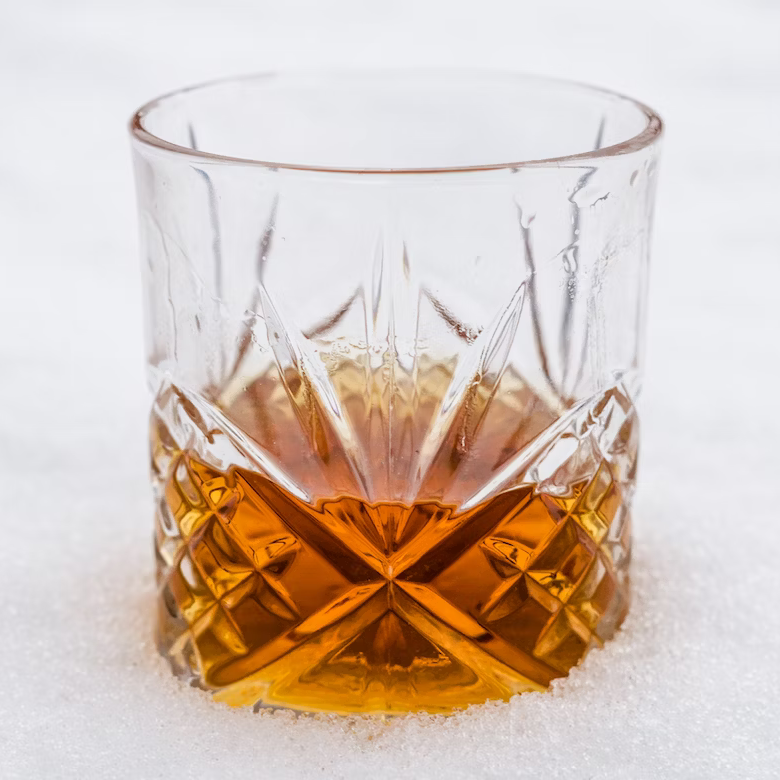Whiskey is a multifaceted beverage that combines heritage, creativity, and a splash of controversy. The distinction between chill-filtered and non-chill-filtered whiskey stands out among the subjects that inspire lively debate. The difference in production techniques has drawn the attention of enthusiasts, including fans of American craft whiskey and whiskey clubs. But does this argument have deeper consequences for the nature and quality of the spirit, or is it just a subtlety for connoisseurs? Let's explore the world of cool filtering to learn the meaning and the meaning behind the terms.
Demystifying the Process of Chill Filtration
After whiskey has aged in barrels, several distilleries use a technique called chill filtering. It entails bringing the spirit down to almost absolute zero degrees, which causes fatty acids and proteins to congeal into silt. The whiskey is then passed through a small mesh filter to remove the sediment, producing a clean and attractive end product.
The goal of chill filtration is to keep whiskey from becoming cloudy when it is iced or mixed with water. While this might improve the cosmetic appearance of the spirit, it has sparked a discussion about possible effects on flavor among whiskey enthusiasts.
Whiskey without a chill filter: Embracing Complexity
Non-chill filtered whiskey, often known as NCF whiskey, is on the other end of the range. By skipping the cold filtration phase in this method, natural substances including oils, esters, and proteins can stay in the finished product. An nuanced flavor profile and a richer mouthfeel may result from the retention of these ingredients.
American craft whiskey manufacturers, who frequently take pride in their artisanal, small-batch production methods, have been at the forefront of the movement to support non-chill filtration. They contend that this process preserves the authenticity and integrity of their products and gives consumers access to whiskey that is more similar to what came straight from the barrel.
The Flavor Factor: Does Chill Filtration Affect Chill Taste?
The flavor argument is the main bone of disagreement in the discussion of cold filtering. Non-chill filtering proponents assert that by removing these minute natural substances, the whiskey may lose some of its complex flavors. The nuanced and lingering aftertaste produced by the oils and esters contributes to an improved tasting experience.
However, supporters of chill filtration claim that the flavor change is minimal and that chill filtering stops some unwanted ingredients, including fatty acids, from giving the whiskey an unpleasant taste or cloudiness when it is served on the rocks or with water.
Marketing gimmick or thoughtful decision?
Whether the non-chill filtration movement represents a true improvement in quality or is primarily a marketing ploy has been questioned by detractors. They contend that the typical customer might not have the palate to recognize the minor variations between whiskey that has undergone cold filtration and whiskey that has not. Because of this, they assert that some producers may be using the label "non-chill filtered" to demand higher costs for their goods without significantly improving the taste.
This viewpoint is complicated by the fact that American craft whiskey is frequently created by ardent craftspeople who are committed to authenticity. Even though it might not be immediately clear to every customer, these producers believe that their decision to accept non-chill filtering is in line with their commitment to upholding the unique qualities of their craft.
Whiskey Club Viewpoint: Tasting Truth
Whiskey clubs, renowned enthusiast meetings, offer a distinctive perspective on this topic. Whiskey clubs frequently have members who are more knowledgeable about the subtleties of flavor, and many clubs hold blind tastings to provide objective evaluations of chill-filtered and non-chill-filtered expressions.
These tastings have received a variety of opinions. While some participants report being able to tell the difference between the two whiskeys in terms of mouthfeel and finish, others find it difficult to draw any definitive conclusions. Thus, rather than having a clear-cut winner, the question becomes one of personal choice, with some whiskey club members preferring non-chill filtered whiskey while others praising the clarity and appearance of chill filtered alcoholic beverages.
Final Verdict: A Matter of Personal Taste
In the end, the choice between chill filtration and non-chill filtering comes down to personal preference. The intricacies of non-chill filtered whiskey may be worth appreciating for some whiskey connoisseurs, but chill filtered whiskey may be preferred for its visual clarity and smoother mouthfeel. American craft whiskey producers are inclined to favor non-chill filtering as a manner of adhering to their craft since they are motivated by tradition and authenticity.
Both methods have virtues in the broad tapestry of whiskey appreciation. The enjoyment that whiskey gives to each person's palate is the most crucial factor. The objective is to enjoy the voyage and recognize the depth that this age-old elixir gives to enthusiasts and whiskey club members alike, whether you raise a glass of non-chill filtered American handmade whiskey or a cold filtered expression from a renowned distillery. Cheers to the lively discussion!
